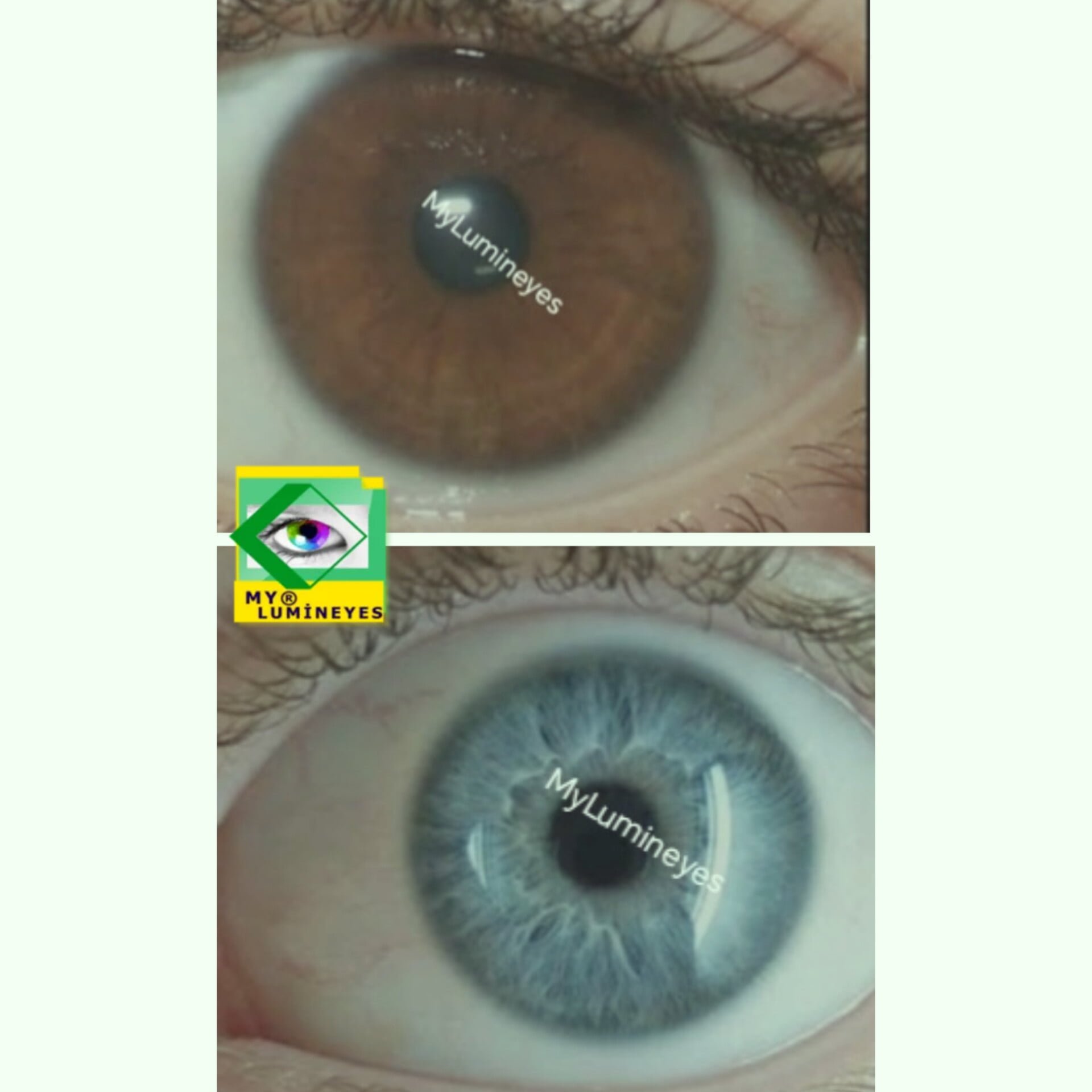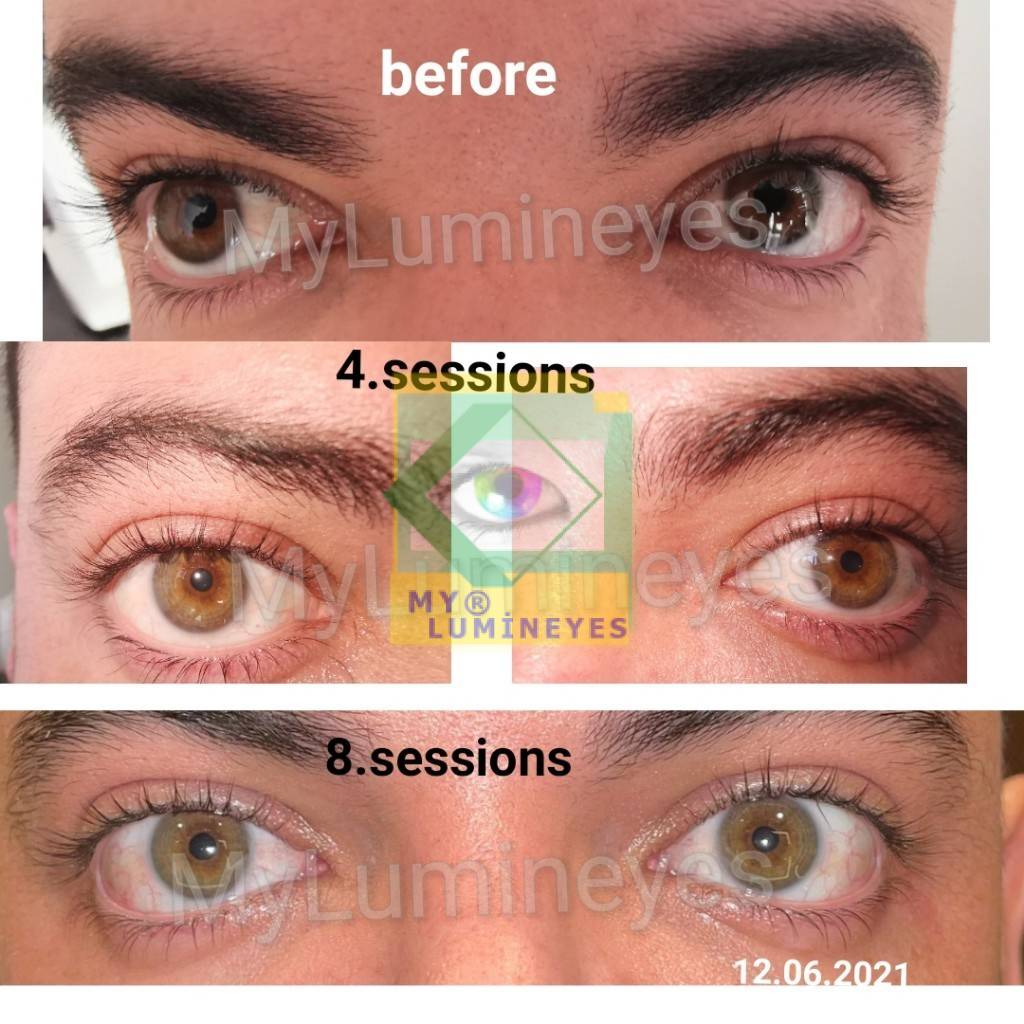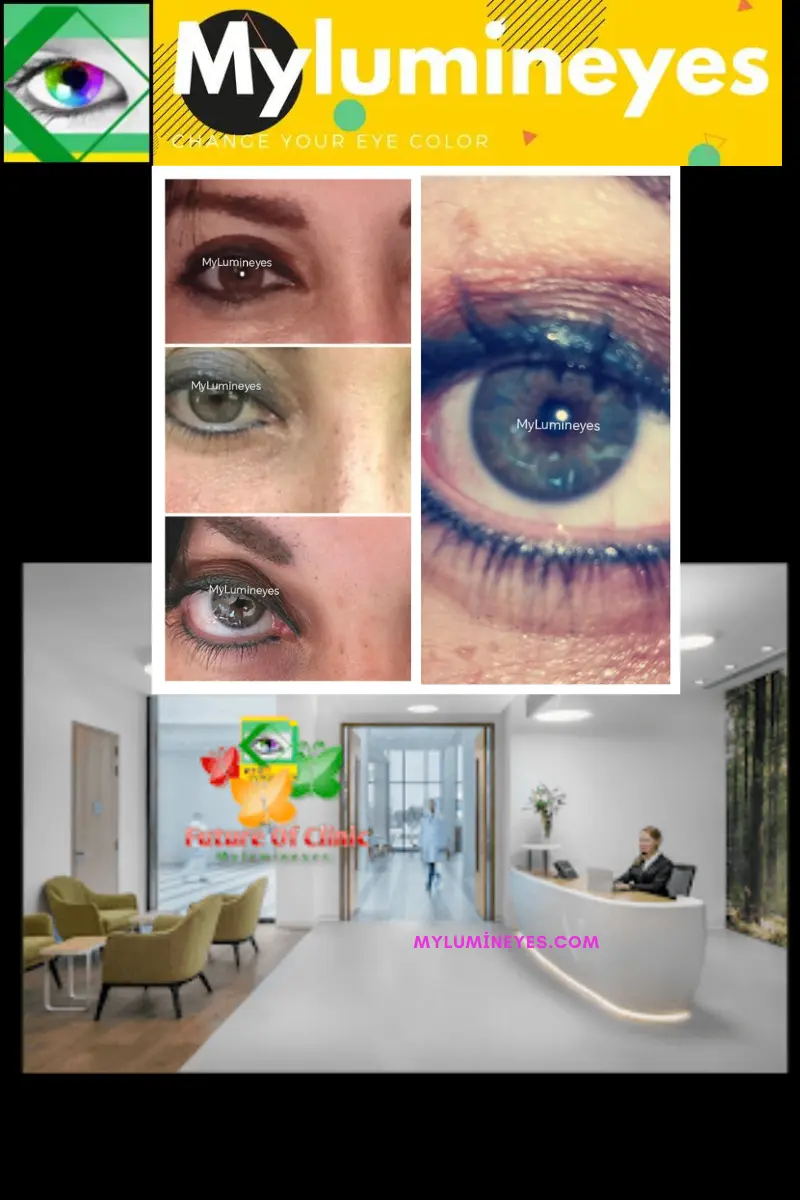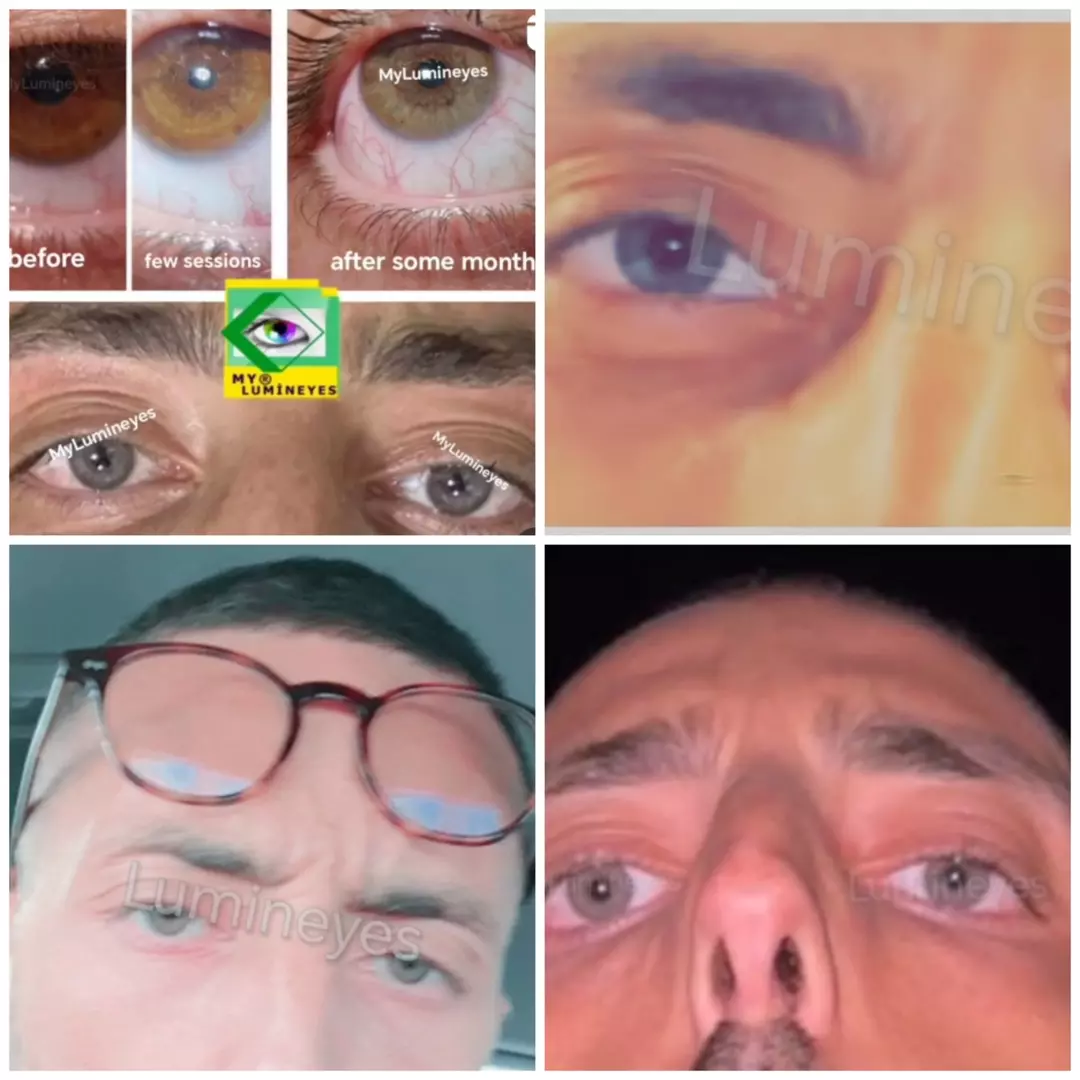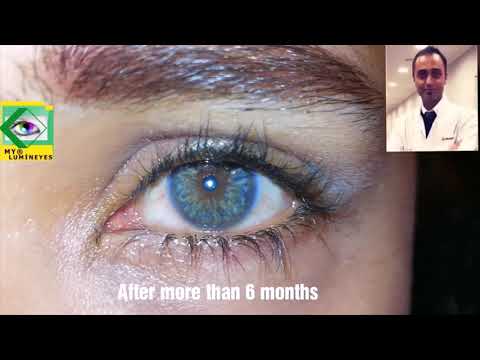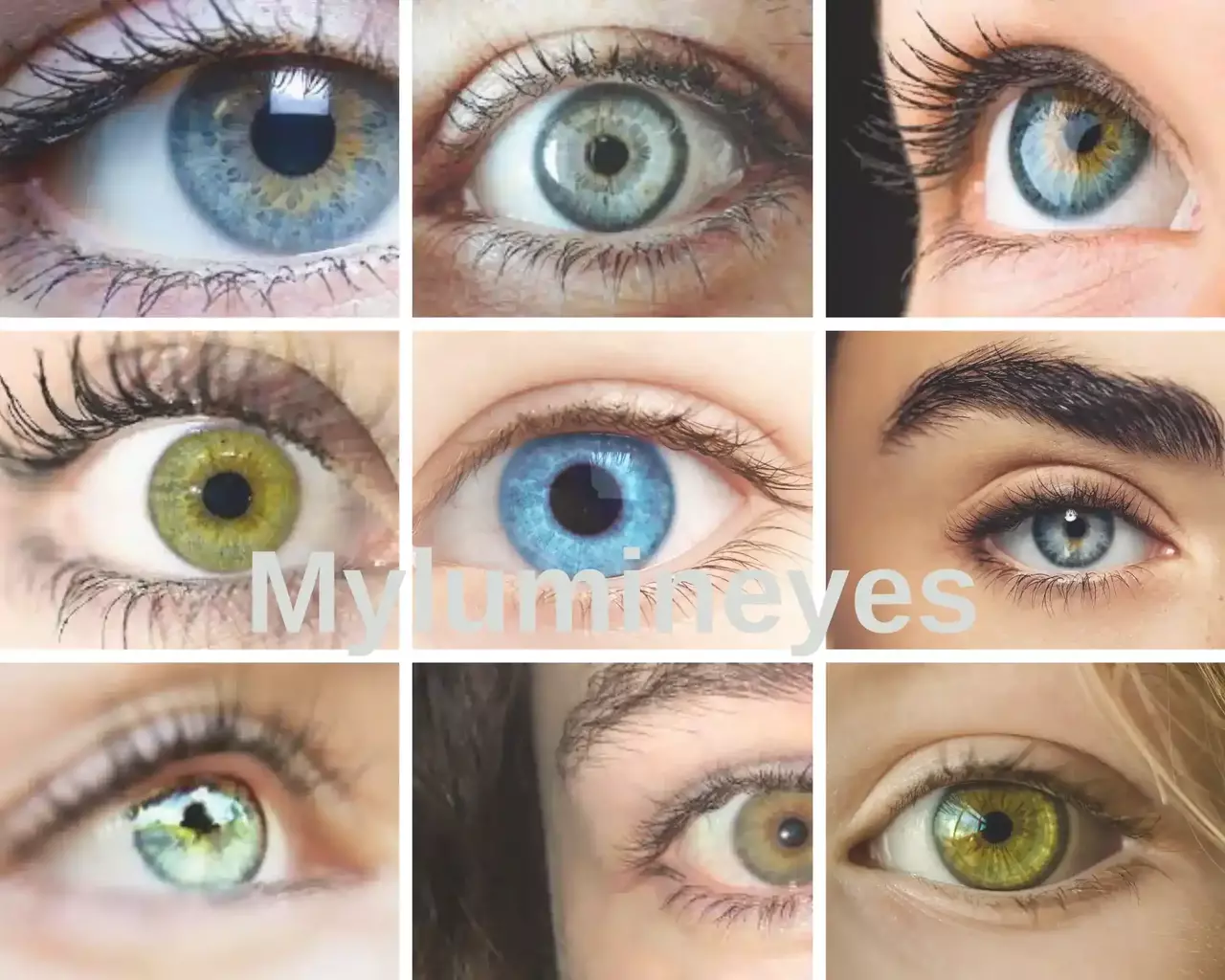Violet eyes or violet eye color
Violet Eye color-Purple eyes are mystical, gorgeous, and entrancing. Although uncommon, purple or violet irises can occur naturally due to a mutation, inflammation within the eye, or albinism. Lack of melanin, not a specific pigment, is what causes all eye colors other than brown. Yes, purple irises do exist, but only under exceedingly rare circumstances, such as certain eye conditions. Violet is the most popular colour of purple for irises. Other hues include lilac and indigo. Natural violet eye color is a gorgeous and rare eye color.
After Lumineyes laser eye color change results, very few violet eye colors can appear, but they’re very rare. The absence of pigmentation causes the light to divide into a spectrum of colors when it strikes the iris. Depending on the amount of melanin, eyes may be green, hazelnut, dark blue, or purple-violet eye colour.
The irises of individuals with blue eyes are colorless. It turns out that blue is in the eye of the beholder. It appears for the same reason that the sky appears azure. The atmosphere of the globe and the irises of certain people spread light rays. This causes the atmosphere and the irises of some individuals to seem blue.
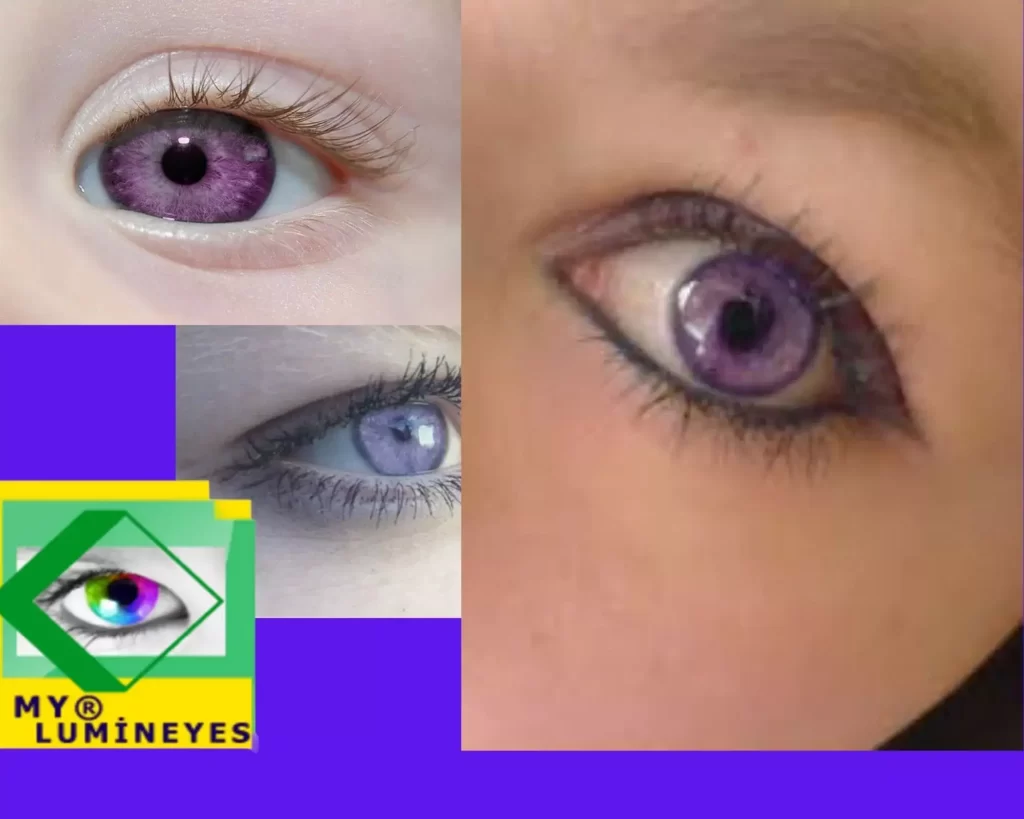
Is it possible to really have violet eyes?
When light hits red blood vessels, it bounces back more, making some irises look purple or violet instead of blue. People who have albinism are more likely to have this color. People think that there can’t be real violet eyes without albinism. This beautiful violet color comes from the eyes reflecting red light from blood vessels and not having enough pigment. Yes, despite what you may think, there are real purple irises.
Due to their characteristic pale hue, purple eyes are also known as “violet eyes.”
According to studies, irises appear crimson when melanin is completely absent because light reflects off the blood vessels of the eye. When there is some melanin but not enough to produce a blue color, red projections mix with only a trace of blue to generate pale purple or violet colors in the eyes.
Causes of violet eyes-purple eyes
Melanin concentration
Melanocytes release melanin, a similar substance that reacts with sunlight to create pigmentation. The irises of a neonate lack completely developed melanocytes. Consequently, the iris’ hue alters as it develops. The majority of newborns have hazel eyes irises. Nevertheless, a few Caucasian infants are born with gray or blue irises. As they get older, their eye color could change.
Heterochromia iridum
Heterochromia is a rare condition characterized by two iris colors or numerous hues within a single iris. There are various types of heterochromia. Heterochromia is a term in medicine for variants in eye color. Heterochromia iridum relates directly to changes in the iris, the pigmented portion of the eyes. The discrepancy can be whole (in which case the eyes have distinct colors) or sectoral (in which case only a portion of the iris has a different hue).
Some individuals have only a region of a distinct color in their iris. This is segmental heterochromia.Totally different irises, such as those formally referred to as complete heterochromia iridium,”
The most common kind of heterochromia is central heterochromia, in which the irises are identical but have a ring of a distinct color surrounding the pupils.If you were not born with heterochromia, it is extremely unlikely that you will develop it, but any change in your eyesight should be reported.
You might only need a simple note. Heterochromia is a condition in which each eye is a different color. Like, one eye might be brown and the other might be brown. The reason for this is not known yet.
Syndrome of Waardenburg
Waardenburg syndrome is a group of diseases that are usually passed down through families. Its symptoms include blindness and pale skin, hair, and eyes.
Eye malignancy
While iris tumors are typically asymptomatic, eye tumors can cause a change in eye color. Albinism is an inherited condition or illness in which the body does not generate or generates minimal pigmentation. This health issue is associated with purple eye syndrome.
Caucasians can have either blue or gray irises, depending on their family tree. Thus, it is quite probable that a child born to a mother with gray eyes and a father with blue eyes will have either color of eyes or a mix of the two
Fuchs syndrome
As a result of Fuchs uveitis syndrome, various areas of the eye become inflamed. Experts believe that in some instances, this condition can modify the appearance of the eyes. Inflammation may cause the irises to appear blue or purple.
Albinism
Albinism is a genetic disorder that reduces the quantity of melanin in the body. It frequently involves diminished melanin in the conjunctiva. With extremely low levels of melanin in the eye, the iris may appear blue, crimson, or violet.Violet is a real but uncommon eye color that is a subtype of blue. Violet-hued melanin pigment requires a very specific iris structure in order to disperse light in a manner that produces a violet eye color or violet eyes.
Can I have violet eyes with eye color change surgery?
It is very rare for violet eye color to occur after Lumineyes laser eye color change. In addition, it is possible to achieve this color with eye color change surgery, although it is difficult. As we mentioned before, natural eye color does not occur with eye color change operations (keratopigmentation or implantation). We think you do not want to miss your old eye color. Therefore, it makes no sense to change eye color except lumineyes.
What is the most uncommon eye color?
This is one of those questions that seems like it ought to have a simple solution, but it doesn’t. In actuality, there is some debate regarding the rarest eye color. This is due in part to the fact that “rare” is a relative concept, as one eye color may be extremely uncommon in one region of the globe and extremely prevalent in another.Is purple the most uncommon eye color? Purple eyes are extremely uncommon, but roughly on par with red eyes.
Less than one percent of the global population has either of these eye colors. This may be disappointing to some, but violet or crimson irises are not naturally found in humans. However, some irises can appear violet under specific illumination or cosmetic conditions. As we mentioned before the most common eye color is brown.
Do your eyes look red?
Red eye color regardless of the hue of your eyes, you may occasionally appear to have crimson eyes in photographs. The crimson eye effect occurs when the pupil of the eye cannot close rapidly enough in response to the illumination.
The flash’s dazzling light enters the eye through the pupil, reflects off the retina at the rear of the cornea, and exits through the pupil again. Due to the abundance of blood at the back of the retina, the camera captures this reflected light, which appears red.
Pink irises : Albinism, in which the lack of pigmentation in the eye prevents light from reflecting off the blood vessels beneath the retina, can result in pink eyes.
Have you ever wished your irises were a different color when you glanced in the mirror?
You may have coveted your friend’s green eyes or wished you had the hazel eyes of your beloved celebrity.
Is it conceivable to experience a change in eye color? Natural eye color change
You have change in eye color? You must make sure there are no early warning indicators of a vision-threatening eye diseases. The genetic material contributed by each parent defines an individual’s eye color. Predicting a child’s eye color is not feasible due to the unpredictable combination of the parents’ DNA. It is possible for offspring to possess eye colors that are completely different from those of their parents.
However, if both parents have brown eyes, it is likely that the offspring will as well. Eye color is highly likely to change slightly over time. The eye color of the majority of infants darkens during the first few years of life. During puberty, your body generates melanin, a darker-colored pigment.Iris constriction and dilation can result in minute variations in eye color.

